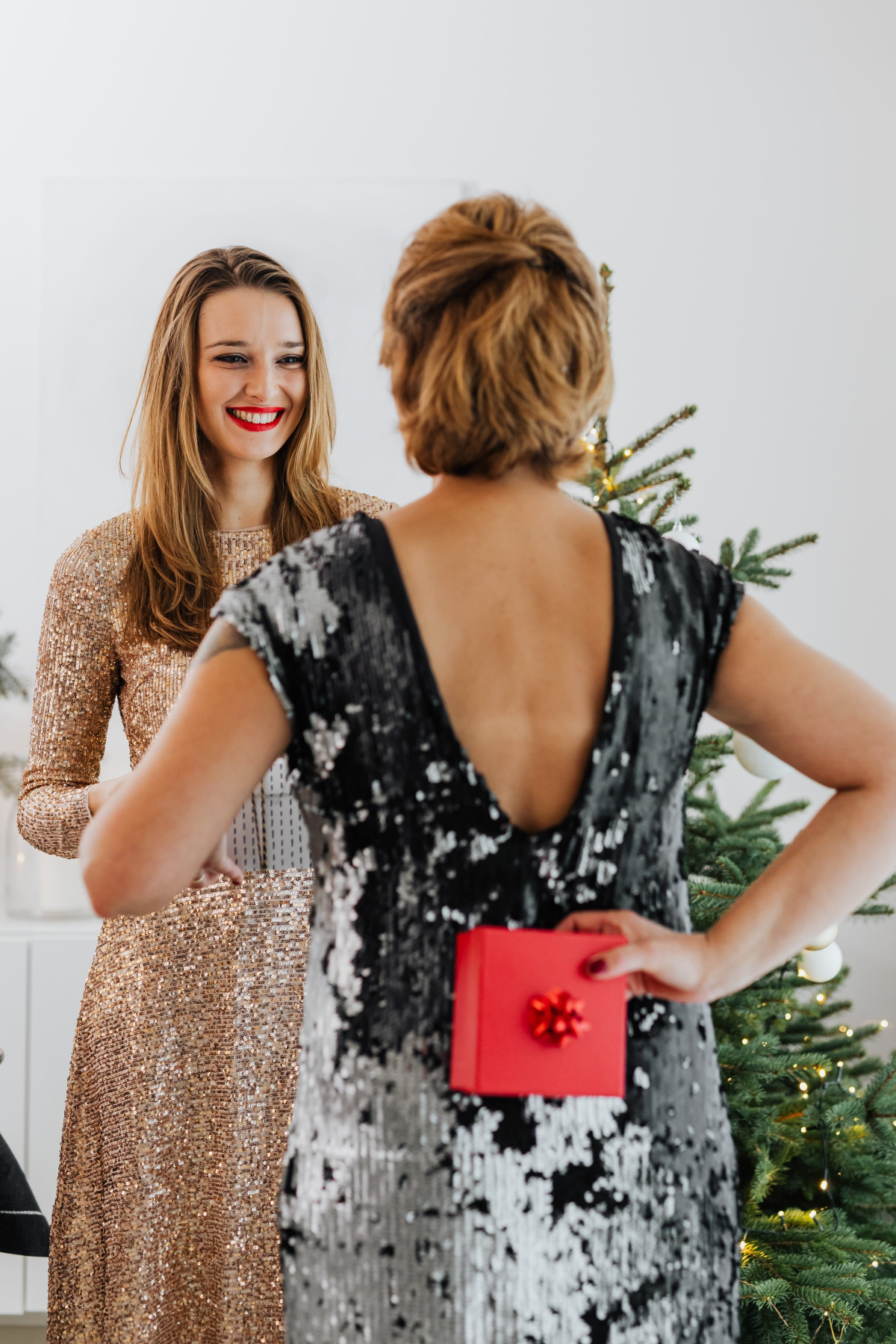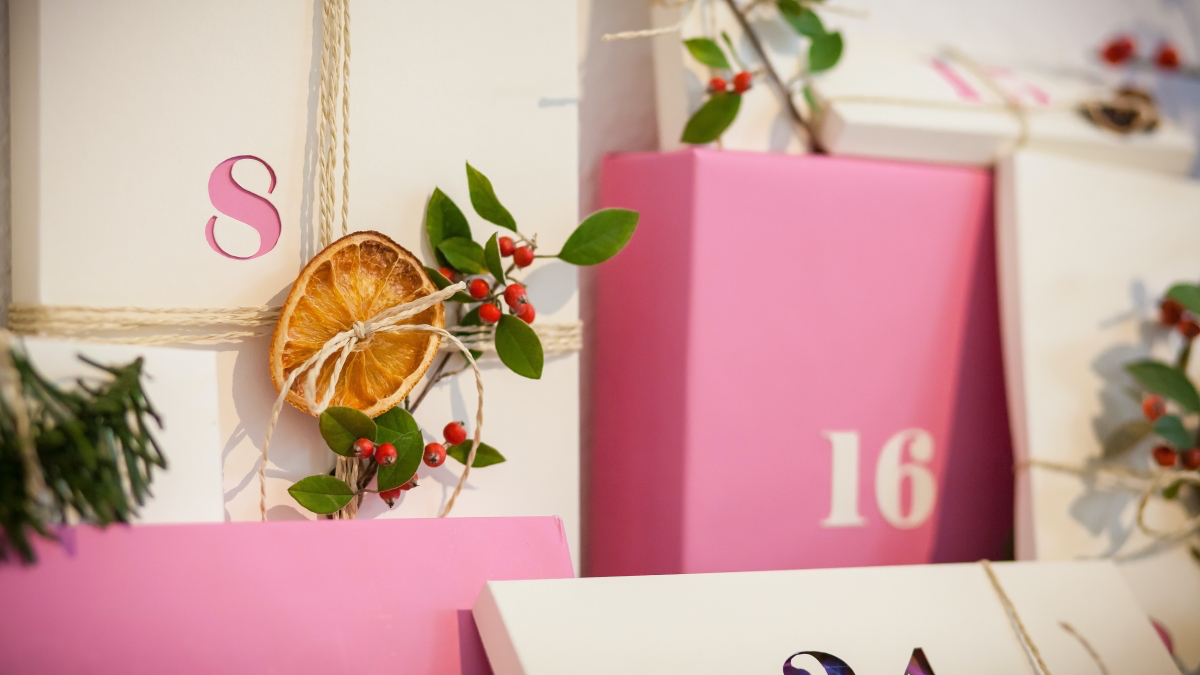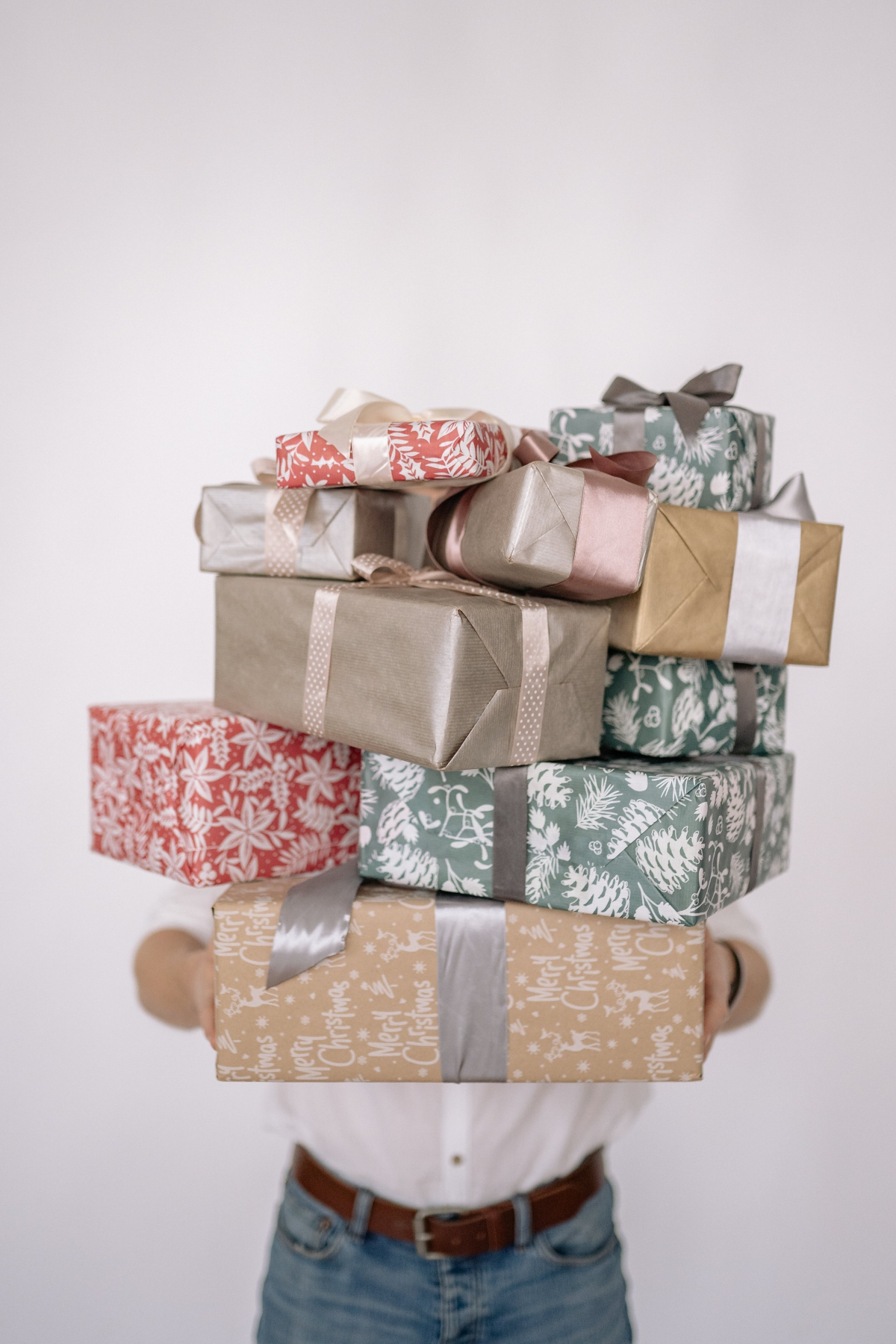My No-Stress Guide to Actually Meaningful Holiday Gifting
I learned my biggest lesson about Christmas gifting the hard way. It was a long time ago, back when I thought being the “perfect” gift-giver meant buying anything and everything that caught my eye for my family. I could practically see their huge smiles as I swiped my card. But then January rolled around, and those credit card bills hit. Suddenly, the memory of those smiles felt pretty small compared to the mountain of financial stress I was under. The joy was gone, but the debt was very, very real.
In this article
That was the year it clicked for me: good intentions aren’t enough. A good plan is what really matters. Holiday gifting is supposed to bring joy to everyone, and that absolutely includes the person swiping the card.
So, over the years, I’ve tweaked and perfected a system. And honestly, it’s not even about spending less (though that often happens). It’s about spending with purpose. It transforms that chaotic, last-minute shopping frenzy into a calm, thoughtful process. It’s the method I share with all my friends when they tell me they’re totally overwhelmed by the holidays. It helps you focus on the person, not just the price tag, and it’s a lifesaver for your bank account and your sanity.

First Things First: Why Are We Even Doing This?
Before jumping into spreadsheets and budgets, let’s take a breath and think about the “why.” Sure, gift-giving is a tradition, but what’s underneath it all? It’s about connection. It’s a physical signal that says, “I was thinking about you. You’re important to me.” When you anchor yourself to that idea, the pressure to buy something flashy or expensive just kind of… melts away. The goal isn’t to impress; it’s to connect.
Experts talk about a common issue where gift-givers and receivers are on totally different pages. We, the givers, often get obsessed with the big reveal—that “wow” moment. So we hunt for flashy, novel, or pricey gifts. But the people receiving the gifts? They usually prefer something practical and useful. A high-quality tool, a cozy sweater, or a subscription they’ll use all year brings more lasting happiness than some dramatic gadget that’s a pain to use.

I once bought a friend this super-fancy, high-tech coffee maker. It looked incredible on the counter. He used it twice. Months later, he sheepishly admitted his simple French press was just easier for his morning routine. My desire for a big reaction didn’t match his actual daily life. Remembering this little disconnect is a great first step.
Oh yeah, and let’s not forget about holiday marketing. It’s an art form designed to make us feel urgent and anxious. “Limited time!” and “Doorbuster deal!” are psychological triggers, tapping right into our fear of missing out. We’re not just buying a product; we’re being sold the idea of a perfect holiday memory. Acknowledging that helps you step back and ask, “Does my brother really want this, or did I just see a really convincing ad?”
The ‘One for You, One for Me’ Trap
Heads up! While we’re talking about the psychology of it all, we have to mention this sneaky budget-killer. It’s that little voice that whispers, “You’ve worked so hard finding gifts for everyone else… you deserve a little something, too.” And while self-care is great, this habit can absolutely torpedo your holiday budget. You go out to buy a sweater for your dad and come home with one for yourself, too. Suddenly your $50 trip to the mall costs $100. Being aware of this tendency is half the battle. If you see something you love, snap a picture and add it to your own wish list for later.

My Planner’s Approach to Holiday Shopping
I treat my holiday gifting like a mini-project. It has a budget, a timeline, and clear goals. I know, that might sound about as festive as filing your taxes, but trust me, this structure is what creates freedom. It gets rid of the stress and last-minute panic, letting you actually focus on the fun, thoughtful part because the logistics are already handled.
Step 1: Set Up a Holiday Sinking Fund
A sinking fund is just a fancy name for a savings account dedicated to one specific goal. Instead of getting hit with a massive expense in December, you save a small, manageable amount all year long. I’ve been doing this for over a decade, and it’s the single best thing I’ve ever done for my holiday finances.
Here’s the basic idea:
- Estimate Your Total Spend: Think beyond just the gifts. You’ll need money for wrapping paper (which can be surprisingly pricey, like $5-8 a roll!), shipping costs, extra food for parties, and maybe even some new decorations. A good starting point is to look at what you spent last year. Let’s say your total comes to $1,200.
- Do the Math: Divide that total by the number of months you have to save. If you start in January, that’s $1,200 / 12 = $100 per month.
- Automate It: Set up an automatic transfer of $100 from your checking to a separate savings account each month. Quick tip: Use a high-yield savings account for this. It won’t make you rich, but your money will earn a little extra interest while it sits there, which is better than nothing!
By December, you have your $1,200 ready to go. No shock to the system, no debt. You’re spending money you already have.

But what if it’s already October? Don’t panic! You haven’t missed the boat. Just adjust the plan. If you have two months left until the holidays, take your $1,200 budget and divide by two. That’s $600 a month. It’s a bigger hit, for sure, but it’s still better than putting it all on a credit card. If that’s too steep, it’s a sign to reassess your budget and maybe scale back a bit this year—which is perfectly okay.
Step 2: The All-Powerful Master Gifting List
A simple spreadsheet is your best friend here. I start a new one every year to keep things clean. It stops me from making impulse buys and, more importantly, it helps me remember what I gave people in previous years so I don’t accidentally buy my aunt the same scarf twice.
A lesser-known trick: I also keep a running note on my phone in a folder called “Gift Ideas.” Throughout the year, if my friend mentions her favorite coffee shop or my dad complains about his worn-out gardening gloves, I jot it down. By the time I sit down to plan, my brainstorming is already half-done!

Here are the columns I use in my spreadsheet:
- Name: The lucky recipient.
- Budget: The absolute max you’ll spend. Be firm!
- Gift Ideas (and where to find them): I list 2-3 options here, which gives me flexibility if something is sold out or goes on sale somewhere else.
- Final Choice: What you actually decided on.
- Actual Cost: Track this to the penny. It helps you stay accountable.
- Status: A simple dropdown with terms like ‘Idea,’ ‘To Buy,’ ‘Ordered,’ ‘Arrived,’ ‘Wrapped.’ It’s so satisfying to change these to ‘Wrapped’!
To make it super easy for you, I made a template you can use. Just click the link and make a copy for your own Google Drive: [Link to a public Google Sheets template would go here: bit.ly/GiftPlannerTemplate]
Step 3: How to Actually Allocate Your Budget
This can be tricky. How do you decide who gets what? Trying to spend the exact same amount on everyone is a recipe for stress. Your relationships and circumstances are different for each person. Instead, I group people into tiers and assign a general budget range to each.

It’s a flexible system, but here’s a rough example of what it could look like:
- Tier 1: Immediate Family (partner, kids): Maybe $75 – $150+ per person.
- Tier 2: Extended Family & Close Friends (siblings, parents, best friends): Around $40 – $75.
- Tier 3: Colleagues, Neighbors, and Friends: Usually in the $20 – $30 range.
These numbers are just a starting point—adjust them to fit your own budget and relationships. It’s just an honest way to acknowledge that we invest differently in different relationships, and that’s perfectly fine.
Finding Gifts That Don’t End Up in a Closet
With a plan and a budget, the fun begins. The goal is to find things that are thoughtful, useful, or create a memory.
A Simple Framework: The ‘Four-Gift’ Idea
This is a super popular strategy, especially for kids, but it works surprisingly well for adults, too. It simplifies things and cuts down on the clutter. The idea is to get:
- Something they want
- Something they need
- Something to wear
- Something to read
It covers all the bases: desire, practicality, and personal growth. It’s a fantastic starting point for brainstorming. You can even adapt it for adults—maybe ‘something to read’ becomes ‘something for their hobby’ or ‘something to experience’.
The Magic of Experience Gifts
Things break. Gadgets become obsolete. But the memory of a shared experience? That can last a lifetime. Experience gifts have become my go-to for so many people. The trick is to match the experience to the person.
- For the Foodie: A class on making fresh pasta, a local food tour, or a gift certificate to that one restaurant they keep talking about.
- For the Adventurer: An indoor rock-climbing session, a zip-lining tour, or a guided kayak trip.
- For the Creative Type: A pottery class, a glassblowing workshop, or a subscription to an online learning platform.
- For the Overwhelmed Parent: Listen, the gift of time is PRICELESS. A gift certificate for a home cleaning service or a few prepaid nights of babysitting can be worth more than any object. I gave this to my sister after she had her second kid, and she still says it was the best gift she got all year.
Pro Tip: Don’t just email them a code. Print out the details, put it in a nice card, and write a note about why you thought they’d love it. Presentation matters!
By the way, you can find great deals on these on sites like Groupon or check out platforms like Airbnb Experiences and Tinggly. Don’t forget to look up your local community center, too—they often have surprisingly cool and affordable classes.
Handmade Gifts: The Reality Check
A handmade gift can be incredibly meaningful. It’s a direct investment of your time and skill. But let’s be real: if you’re not crafty, deciding to build a bookcase two weeks before Christmas is a terrible idea. The stress will completely ruin the gesture.
Here are a few beginner-friendly ideas that are actually doable:
- Infused Olive Oils: So easy! Get a bottle of decent olive oil, add some herbs like rosemary or whole garlic cloves, and let it sit. Pour it into nice bottles with a custom label. The cost is super reasonable, too. A good bottle of olive oil might be $15, a couple of cute dispenser bottles are about $5 each, and herbs are a few bucks. You’ve got an amazing, personal gift for under $25.
- Custom Spice Blends: Mix up a unique BBQ rub or a steak seasoning. Put it in a nice jar with a little tag suggesting a recipe.
- A Curated Photo Album: In our digital world, a physical album is so special. Print out photos that tell a story and write little captions. It’s a gift of shared memories.
A word of caution: “handmade” doesn’t always mean “cheaper.” The cost of quality yarn for a scarf or nice jars for your spice blends can add up. The real value here is the personal touch, not the savings.
Inspirational Gallery
How do you find a truly personal gift without outright asking?
Try the “Active Listening” method for a month before the holidays. Pay attention to casual complaints (“I can never find a good travel mug!”) or wistful comments (“I’d love to learn how to make fresh pasta”). Keep a private note on your phone. These fleeting remarks are goldmines for gifts that say, “I hear you and I care about what makes you happy.” It turns gift-finding from a frantic search into a quiet, ongoing observation.
A 2019 study found that the value of unwanted gifts in the U.S. alone could exceed $15 billion, with many ending up in landfills.
This staggering figure reframes thoughtful gifting as not just a personal or financial choice, but an environmental one. Opting for experiences, consumables, or a single, high-quality item someone truly needs is a powerful way to reduce waste and give a gift that won’t become part of the problem.
The secret to a great gift isn’t always the gift itself—it’s the presentation. Elevate even a simple present by embracing the Japanese art of Furoshiki. Using a beautiful piece of fabric to wrap a gift not only looks stunning but is also a sustainable, reusable alternative to paper. Brands like Ogawa Furoshiki offer gorgeous designs, and the cloth itself becomes a secondary, useful gift.
- A gift that provides a lasting skill.
- A memory that will be cherished for years.
- A break from the cycle of accumulating ‘stuff’.
The answer? Gifting an experience. Instead of an object, consider a voucher for a pottery class, a subscription to MasterClass for that aspiring chef, or tickets to a concert. The joy of an experience often far outlasts the novelty of a physical item.
For bigger-ticket items that an individual truly wants, consider organizing a group gift. It’s a game-changer. Pooling resources with siblings to buy your parents that high-end espresso machine they’ve been eyeing, or with friends for that coveted Away suitcase, means the recipient gets something they genuinely desire without anyone bearing the full financial burden. Tools like Giftster or Elfster can make organizing it seamless and discreet.
“The manner of giving is worth more than the gift.” – Pierre Corneille, French dramatist
A Physical Item: A high-end gadget is impressive at the moment of unwrapping, but its novelty can fade. It can become another object to store, charge, and maintain.
A Consumable Luxury: A curated box of artisanal cheeses from a local fromagerie or a selection of rare coffees from a roaster like Counter Culture Coffee provides a moment of pure indulgence without adding to long-term clutter.
Often, the fleeting-but-delicious experience creates a more potent and positive memory.
Sometimes the most meaningful gift doesn’t come in a box. Consider gifting your skills or your time with a personalized ‘coupon book’.
- One evening of free babysitting for new parents.
- A ‘tech support’ session for a less tech-savvy relative.
- A promise to cook their favorite meal once a month.
It’s a gift of pure connection, costs nothing but your time, and is often more valuable than anything you could buy.
A common pitfall: Gifting with an agenda. This is the act of giving someone a gift that you want them to have, rather than one they actually want. Think a cookbook for a partner who doesn’t enjoy cooking, or workout gear for someone who hasn’t expressed interest in fitness. A gift should be a celebration of who the person *is*, not a project to change them.










